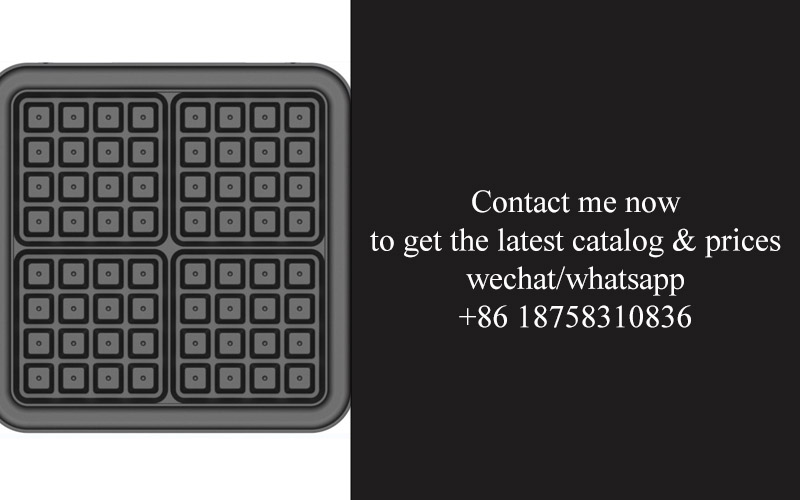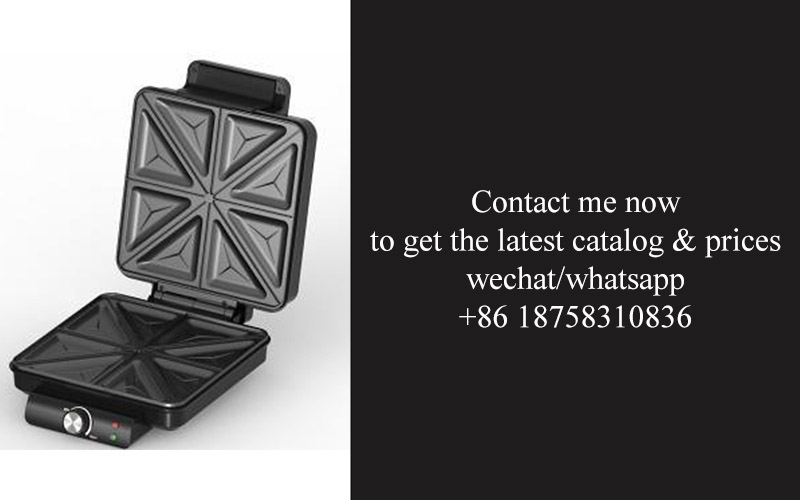Address
304 North Cardinal
St. Dorchester Center, MA 02124
Work Hours
Monday to Friday: 7AM - 7PM
Weekend: 10AM - 5PM
Address
304 North Cardinal
St. Dorchester Center, MA 02124
Work Hours
Monday to Friday: 7AM - 7PM
Weekend: 10AM - 5PM

In the dynamic landscape of the appliance industry, the evolution of in-house mold making has emerged as a pivotal development. This shift towards greater control and customization is reshaping how grill manufacturers approach their products, leading to innovations that cater to the ever-changing demands of consumers. As we delve into the intricacies of this process, it becomes clear that in-house mold making is not just a trend—it’s a transformative force driving the future of grilling technology.
The Rise of In-House Mold Making
In the competitive landscape of the kitchen appliances industry, the advent of in-house mold making has emerged as a pivotal trend that’s reshaping the way grills and other kitchen appliances are produced. This shift towards greater self-reliance and control over the manufacturing process is driven by a multitude of factors, each contributing to the gradual yet significant rise of in-house mold making.
Manufacturers are recognizing the value of being able to create and refine molds internally, which was once a process outsourced to specialized mold-making companies. The ability to design, develop, and produce molds in-house offers several advantages that are driving this trend.
One of the primary benefits is the enhanced flexibility it provides. By having in-house capabilities, companies can respond more quickly to market demands and customer feedback. This agility allows for the production of custom molds that can cater to specific product variations, enabling manufacturers to produce a wider range of grill designs and features that resonate with different consumer segments.
Quality control is another cornerstone of the in-house mold-making movement. When the process is managed internally, it’s easier to maintain consistent standards throughout the production cycle. This direct oversight ensures that the molds are not only designed to precise specifications but are also maintained and operated with the highest level of care, reducing the risk of defects and improving the overall quality of the finished product.
The cost-effectiveness of in-house mold making cannot be overstated. While the initial investment in equipment and skilled personnel can be significant, over time, the savings from reduced outsourcing costs can be substantial. This is particularly true when considering the long-term relationship with a particular product line or brand, as the cumulative savings from producing multiple iterations of a mold can be considerable.
Moreover, the trend towards in-house mold making is closely tied to the increasing importance of innovation in the kitchen appliances market. As consumers demand more unique and high-tech features, the need for customized molds that can produce complex and innovative grill components has grown. This has pushed manufacturers to invest in advanced design software and cutting-edge manufacturing technologies that can handle the intricacies of modern grill design.
The integration of in-house mold making also fosters a culture of continuous improvement within manufacturing facilities. When designers, engineers, and technicians are all under one roof, there’s a greater opportunity for collaboration and knowledge sharing. This cross-functional approach can lead to the development of new techniques and methodologies that can be applied to other areas of the production process, further enhancing efficiency and output.
The environmental impact of manufacturing processes is also a crucial consideration, and in-house mold making can play a role in sustainability efforts. By reducing the need for transportation of molds to and from external suppliers, companies can minimize their carbon footprint. Additionally, having more control over the manufacturing process allows for better resource management and waste reduction.
The rise of in-house mold making is not without its challenges. The need for skilled labor, the capital investment required for equipment, and the potential for downtime during the transition to in-house mold making are all factors that must be carefully managed. However, for many companies, the long-term benefits outweigh these initial hurdles.
As the trend continues to gain traction, it’s clear that the in-house mold making movement is here to stay. It’s not just a strategic shift in manufacturing but a strategic investment in the future of the kitchen appliances industry. By embracing in-house mold making, manufacturers are not only preparing for the demands of the present market but also positioning themselves to lead the way in the future of grill and kitchen appliance design and production.

In-house mold making has emerged as a pivotal strategy in the grill industry, offering a myriad of benefits that can significantly impact a company’s competitive edge and product quality. Here are some of the key advantages that come with this approach:
Precision and ControlBy producing molds in-house, companies gain complete control over the mold-making process. This ensures that every detail is tailored to the exact specifications of the grill components, resulting in products that fit perfectly and operate smoothly.
Quality AssuranceThe ability to oversee every stage of mold production means manufacturers can implement rigorous quality checks. This minimizes the risk of defects and ensures that the final grill components meet the highest standards of excellence.
Cost-EffectivenessWhile the initial investment in in-house mold making can be substantial, over time, it often proves to be more cost-effective. By eliminating the need for external mold suppliers, companies can reduce costs associated with tooling, shipping, and potential delays in production.
Speed to MarketWhen molds are made in-house, the time from design to production is significantly reduced. This agility allows companies to bring new grill models to market faster, capitalizing on emerging trends and consumer demands.
Customization and InnovationIn-house mold making enables manufacturers to quickly adapt to changes and customer requests. This flexibility fosters innovation and allows for the creation of custom grill designs that can cater to niche markets or individual preferences.
SustainabilityWith in-house mold making, manufacturers can reduce their environmental footprint. By cutting down on the number of suppliers and the transportation of molds, they contribute to a more sustainable supply chain.
Technical ExpertiseHaving a dedicated mold-making team in-house encourages the development of technical expertise. This specialized knowledge can lead to improvements in mold design, material selection, and production techniques, all of which contribute to superior grill components.
Reduced Dependency on External SuppliersRelying on external mold suppliers can be risky, as delays or quality issues can be out of the manufacturer’s control. In-house mold making mitigates these risks by ensuring that the process is consistent and predictable.
Improved Product Life CycleHigh-quality molds lead to longer-lasting grill components, reducing the need for frequent repairs or replacements. This not only improves customer satisfaction but also enhances the overall product life cycle.
Enhanced CollaborationWhen all aspects of mold making are managed internally, it fosters a collaborative environment where different departments can work together seamlessly. This cross-functional teamwork can lead to innovative solutions and a more cohesive product development process.
In summary, the benefits of in-house mold making in the grill industry are multifaceted. From increased precision and control to cost savings and enhanced innovation, this approach offers a comprehensive advantage that can drive success in a highly competitive market. By investing in in-house mold making capabilities, companies are not just producing better grill components; they are investing in their future.

In the realm of in-house mold making, the process is a blend of art and science, meticulously crafted to ensure precision and quality. Here’s an intricate look into the steps involved:
The initial phase involves the creation of detailed designs using advanced CAD (Computer-Aided Design) software. These designs are the blueprints for the mold, and they must be accurate to the smallest detail to ensure the final product meets the desired specifications.
Once the design is finalized, it moves to the prototyping stage. Prototypes are made to test the design’s feasibility and to make any necessary adjustments before moving forward with the mold. This stage often involves 3D printing or CNC (Computer Numerical Control) machining to create a physical model of the part.
The selection of materials is critical in mold making. The material must be durable enough to withstand the pressures of the molding process and the demands of the final product. Common materials include steel, aluminum, and specialized plastics, each chosen for its unique properties that align with the mold’s intended use.
After the material is selected, the mold is fabricated using precision machining techniques. This process includes cutting, drilling, and shaping the material to create the mold’s complex geometry. The mold must be designed with allowances for wear and tear, as well as for the release of the final product from the mold.
The mold’s surfaces are then polished to a high degree of smoothness. This is essential for the quality of the final product, as a smooth surface reduces the likelihood of defects and ensures that the mold can be used repeatedly without losing its shape.
Next comes the mold assembly, where individual components of the mold are brought together. This can involve the use of specialized tools and fixtures to ensure that the mold is correctly aligned and that the parts fit together seamlessly.
Once assembled, the mold is tested. This involves filling the mold with a material that mimics the final product’s material and running a series of tests to ensure that the mold functions as intended. This phase can uncover any issues that need to be addressed before the mold is used for production.
After successful testing, the mold is ready for production. The molding process itself can vary depending on the material and the design of the product. It typically involves injecting molten plastic into the mold, where it cools and hardens into the shape of the final product.
Once the mold has been used to produce the desired number of parts, it is inspected for any defects. This quality control step is crucial to ensure that every product that comes off the line meets the high standards set by the manufacturer.
The final stage of the in-house mold making process involves the maintenance and repair of the mold. Over time, molds can wear down or become damaged, requiring regular maintenance to keep them in optimal condition for continued use.
Throughout the entire process, the emphasis is on precision, efficiency, and the ability to make rapid adjustments. In-house mold making allows manufacturers to have complete control over the quality and speed of production, which is invaluable in today’s competitive market.

In the ever-competitive kitchen appliance market, staying ahead requires a keen understanding of industry trends and a strategic approach to market analysis. Here’s an in-depth look at some of the key trends and how they are shaping the market:
The rise of smart appliances has been a significant trend in recent years. Consumers are increasingly seeking kitchen technology that offers convenience, efficiency, and connectivity. This shift has driven the demand for smart grills, which not only offer the traditional cooking functionalities but also provide users with the ability to control their grills remotely via smartphones or tablets.
Customization has become a buzzword in the industry, reflecting the changing preferences of consumers who want to express their personal style in their homes. Manufacturers are responding by offering a wider range of grill designs, finishes, and features. In-house mold making plays a crucial role in this trend, enabling the creation of unique components that can be tailored to meet specific customer needs.
Health and wellness are at the forefront of consumer concerns, and this is reflected in the kitchen appliance market. People are looking for cooking solutions that support a healthy lifestyle, such as grills that reduce smoke and fat. Market analysis shows a growing interest in eco-friendly and low-carbon appliances, with consumers willing to pay a premium for products that align with their values.
The demand for energy-efficient appliances is on the rise, driven by both environmental concerns and rising energy costs. Manufacturers are focusing on developing grills that consume less energy while still delivering optimal performance. This trend is not just about meeting regulations; it’s about providing consumers with solutions that are both sustainable and cost-effective.
E-commerce has transformed the way consumers purchase kitchen appliances, including grills. Online sales platforms have expanded the reach of brands and given consumers access to a wider range of products. Market analysis indicates that e-commerce continues to grow, and brands that effectively leverage this channel are better positioned to capture market share.
Sustainability and ethical manufacturing are becoming more important in the appliance industry. Consumers are not only interested in the environmental impact of their purchases but also in the labor conditions and supply chain transparency of the companies they support. This trend is prompting manufacturers to invest in sustainable practices and to be more transparent about their operations.
The integration of kitchen appliances with home automation systems is another emerging trend. Consumers are interested in creating cohesive smart homes where their kitchen appliances can be controlled and monitored through a single interface. Grills that can be integrated into these systems offer convenience and the ability to tailor cooking experiences to individual preferences.
Finally, the trend towards globalization means that manufacturers are looking for new markets and opportunities abroad. Market analysis shows that certain regions, such as Asia and Latin America, are experiencing rapid growth in the kitchen appliance sector. Understanding these market dynamics and adapting products to meet local needs is crucial for success in these regions.
In conclusion, the kitchen appliance industry, particularly in the realm of grills, is undergoing a transformation shaped by various trends. Staying abreast of these trends and conducting thorough market analysis is essential for manufacturers looking to innovate, differentiate their products, and capture the attention of today’s discerning consumers.

In the realm of grill manufacturing, there are several compelling success stories that showcase the impact of innovative mold-making processes. These case studies highlight how companies have leveraged in-house mold making to create unique, high-quality products that have resonated with consumers and set new standards in the industry.
1. The Story of GrillPro InnovationsGrillPro Innovations made a bold move by investing in state-of-the-art in-house mold-making capabilities. This allowed them to design and produce grills with intricate designs and superior functionality. Their custom molds enabled them to create a line of grills that were not only visually stunning but also offered unparalleled cooking experiences. The result? A surge in sales and a strong brand reputation for quality and innovation.
2. The Revolution at BarbecueBlastBarbecueBlast faced stiff competition but turned the tide with their in-house mold-making expertise. They developed a unique grill that featured a modular design, allowing customers to customize the cooking surface to their preferences. The process of creating these molds was meticulous, but the end product was a game-changer. Their grills became a must-have for outdoor enthusiasts, and the company’s market share soared as a result.
3. The Craftsmanship of EliteGrillsEliteGrills has always been known for their handcrafted, high-end grills. By integrating in-house mold making into their production process, they were able to maintain their commitment to quality while also scaling up production. The precision of their molds allowed for the creation of complex grill designs with seamless finishes. This blend of craftsmanship and modern technology has won over both collectors and casual grillers alike.
4. The Customization Power of FlexiGrillFlexiGrill recognized the importance of customization in the grill market and capitalized on it with their in-house mold-making capabilities. They offered a range of grill models with interchangeable parts, allowing customers to tailor their grills to their specific cooking styles. The process of creating these molds was a delicate balance between flexibility and durability, but the end result was a diverse product line that catered to a wide audience.
5. The Efficiency of QuickFire GrillsQuickFire Grills needed a way to streamline their production without compromising on quality. By bringing mold making in-house, they were able to create molds that were both efficient and precise. This allowed them to produce a high volume of grills with minimal waste and a consistent output. The efficiency of their in-house mold-making process helped them to meet demand and expand into new markets.
6. The Eco-Friendly Approach of GreenGrillGreenGrill took a different approach by focusing on sustainability. They developed molds that were not only precise but also environmentally friendly. By using recycled materials and sustainable practices in the mold-making process, they were able to produce grills that were both eco-conscious and high-performing. This commitment to green technology has earned them a loyal customer base and a reputation for being a leader in sustainable appliance manufacturing.
7. The Global Reach of WorldGrillWorldGrill expanded its operations internationally by using in-house mold making to adapt their grills to various cultural preferences. Their molds were designed to accommodate different fuel types and cooking methods, making their grills versatile and appealing to a global audience. This strategic approach has helped WorldGrill establish a strong presence in multiple markets around the world.
Each of these case studies demonstrates how in-house mold making has been a catalyst for success in the grill industry. By focusing on design, customization, efficiency, sustainability, and global adaptability, these companies have not only improved their own products but also raised the bar for the entire industry.

In the realm of manufacturing, the evolution of in-house mold making is a testament to the power of innovation and adaptability. As we look ahead, the future of in-house mold making holds exciting possibilities that promise to reshape the industry in profound ways.
The integration of artificial intelligence and machine learning is set to revolutionize the mold-making process. Advanced algorithms can predict material behaviors, optimize designs, and even automate certain aspects of the mold-making process, reducing errors and streamlining production.
3D printing technology is poised to become a cornerstone in the future of in-house mold making. This technology allows for the creation of complex geometries that were once impossible, offering unparalleled design flexibility and the ability to produce molds with minimal material waste.
Materials science is advancing at a rapid pace, and the future of in-house mold making will see the development of new materials that offer enhanced durability, heat resistance, and lightweight properties. These advancements will lead to more efficient and sustainable manufacturing processes.
Collaboration between designers, engineers, and material scientists will be crucial in shaping the future of in-house mold making. By bringing diverse expertise together, companies can push the boundaries of what’s possible, creating products that are not just functional but also aesthetically pleasing and environmentally friendly.
As sustainability becomes a key concern for consumers and businesses alike, the future of in-house mold making will focus on reducing the environmental footprint of the manufacturing process. This could involve the use of recycled materials, energy-efficient production methods, and the design of products that are easier to disassemble and recycle at the end of their life cycle.
The globalization of the manufacturing industry means that companies will need to be more agile than ever. In-house mold making will enable manufacturers to respond quickly to market demands and supply chain disruptions by reducing reliance on external suppliers and shortening production cycles.
The rise of additive manufacturing will continue to challenge traditional mold-making techniques. While subtractive processes have long been the norm, the future will see a blend of both approaches, with additive manufacturing used to create complex molds that would be too expensive or time-consuming to produce using traditional methods.
Customization is becoming a driving force in consumer markets, and in-house mold making will play a pivotal role in enabling this trend. Consumers will demand personalized products, and the ability to create custom molds quickly and efficiently will be a significant competitive advantage.
As the industry evolves, the importance of quality control and precision will only grow. Advanced metrology and inspection technologies will be integral to ensuring that molds meet the stringent requirements of modern manufacturing processes.
In conclusion, the future of in-house mold making is bright with opportunities for innovation and improvement. By embracing technological advancements, focusing on sustainability, and fostering collaboration, the industry will continue to push the boundaries of what is possible, delivering products that are not just functional but also forward-thinking.

In reflecting on the journey that in-house mold making has taken within the grill industry, it’s clear that this evolution has reshaped the landscape in profound ways. The process has become not just a means of production, but a cornerstone of innovation and differentiation. As we stand at this juncture, the future of in-house mold making is brimming with possibilities that promise to further revolutionize the industry.
Materials science is advancing at a rapid pace, and in-house mold making is poised to benefit greatly from these advancements. We’re seeing a surge in the use of composites, which offer a perfect blend of strength, flexibility, and durability. These materials can be tailored to specific applications, allowing for grills that are not only functional but also aesthetically pleasing.
The advent of smart molding technologies is another game-changer. These technologies enable real-time monitoring of the molding process, ensuring that every aspect is optimized for the best results. This level of precision is essential for creating complex grill components that require intricate designs and tight tolerances.
One of the most exciting developments is the ability to customize molds on a large scale. This means that manufacturers can cater to niche markets and individual customer preferences without the need for massive production runs. The result is a diverse range of grill designs that cater to a wide array of tastes and needs.
As environmental concerns grow, the future of in-house mold making will likely see a greater emphasis on sustainability. Eco-friendly materials and energy-efficient manufacturing processes are becoming more prevalent. This shift not only aligns with global sustainability goals but also reduces costs and waste over time.
The future of in-house mold making will also be characterized by closer collaboration between designers, engineers, and manufacturers. Advanced data analytics will play a crucial role in this collaboration, providing insights that inform design decisions and improve the efficiency of the molding process.
With the advancements in in-house mold making, companies are now able to expand their reach into new markets with greater ease. The ability to produce customized, high-quality grill components locally can significantly reduce shipping costs and lead times, making it more attractive for international customers.
Despite the technological advancements, the human element remains pivotal. The expertise of mold makers and designers is invaluable in pushing the boundaries of what’s possible. Their creativity and problem-solving skills are what drive innovation and ensure that in-house mold making continues to push the industry forward.
The future of in-house mold making is inherently uncertain, but that’s part of its allure. As new technologies emerge and consumer demands evolve, the industry will need to remain adaptable and open to change. The willingness to embrace the unknown and take calculated risks will be key to staying ahead in a rapidly changing market.
In-house mold making has come a long way, transforming the grill industry with its focus on quality, customization, and efficiency. As we look to the future, it’s clear that the path ahead is filled with potential. By leveraging advanced materials, smart technologies, and a commitment to sustainability, the industry is poised to continue its upward trajectory, delivering products that not only meet but exceed the expectations of consumers worldwide.